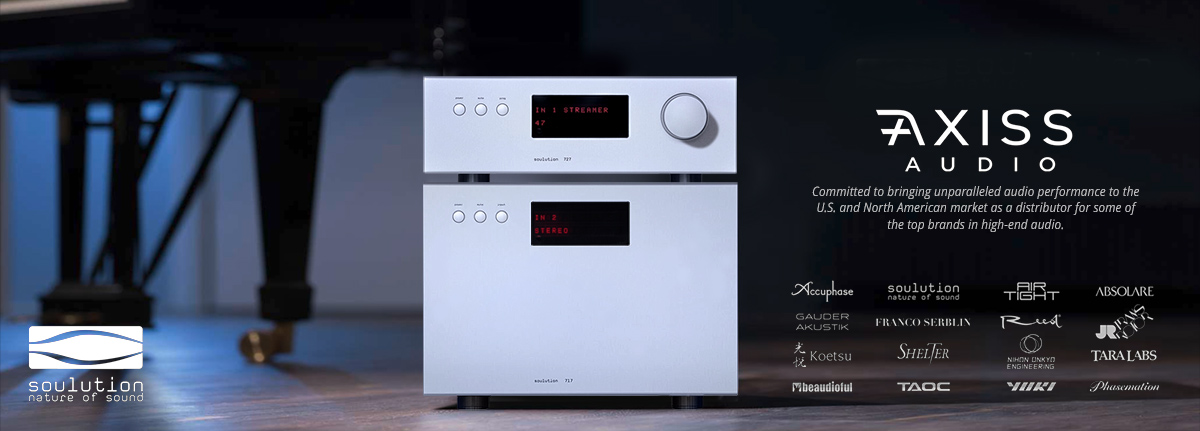Enjoy and safe trip back!Steve’s in New Zealand. Not planning on moving threads as I’m having too much fun here for the past 17 days. I don’t get home for another 2 days

david
Enjoy and safe trip back!Steve’s in New Zealand. Not planning on moving threads as I’m having too much fun here for the past 17 days. I don’t get home for another 2 days

(I promise I am not starting an argument here!) I wonder if somehow the Transparent Audio network boxes soak up a little bit of the precious (little) power the ML3s produce?
(I promise I am not starting an argument here!) I wonder if somehow the Transparent Audio network boxes soak up a little bit of the precious (little) power the ML3s produce?
I think the bass driver is a 12 inch Italian Faital driver.
is the CN 191 only a two way speaker?
The AirScout has JBL 2405 slit tweeters in addition...
Thanks - I had though about it, I even wrote similar things about the Opus, but your word "organic" summarizes it beautifully. It is why I asked for experience of users!
Do you remember that I tried to buy your Opus MM2 but someone was faster than me?
What ever the components in the box are, they are going to consume some wattage.(I promise I am not starting an argument here!) I wonder if somehow the Transparent Audio network boxes soak up a little bit of the precious (little) power the ML3s produce?
(I promise I am not starting an argument here!) I wonder if somehow the Transparent Audio network boxes soak up a little bit of the precious (little) power the ML3s produce?
What ever the components in the box are, they are going to consume some wattage.
I get the concept behind the cables but I'm highly sceptical.
Was thinking the same thing Ron. I am not sure what is going on in the “network box” but expect to find resistors and capacitors in the path.
What ever the components in the box are, they are going to consume some wattage.
I get the concept behind the cables but I'm highly sceptical.
No, they are not. Their filtering action is in the hundreds of kilohertz frequecny.
Thanks - I had though about it, I even wrote similar things about the Opus, but your word "organic" summarizes it beautifully. It is why I asked for experience of users!
Do you remember that I tried to buy your Opus MM2 but someone was faster than me?
I also remember that and also looked seriously at them...and remember telling Mike i was seriously interested but in the end decided it was not the right time to be spending that kind of money. Today, I am blessed to own the TA Opus Gen 5s...it was a more appropriate time when I got them...and the price was also right.i do remember that.
The network boxes do not take any of the power of the ML3s (or any other amplifier) produce. But yes, I know that some people have a strong bias against network cables and even if we show them technical proofs that their arguments are false they will keep their prejudice. I have often wrote that no one has ever presented an acceptable technical explanation why cables sound so different and I do not expect a different think about network cables.
Thank you very much, BillEvening Chris. Yes the CN 191 is a 2 way using the S2 and AK151 15” woofer. 2nd order crossover. Whole thing is horn loade giving 105dB.
That would indeed have been my next questionIf you are wondering - it is good to 16khz since no tweeter and s2 extends to 16khz
Thanks Brad.Not possible for conversion. The cabinets are totally different. The CN191 is basically a Klipsch corner horn design whereas the Scouts are a backloaded, front scoop design. Yours use a Fane 12 inch woofer and a horn from I am not sure where for the mid range. The CN191 uses a Vitavox horn and S2 driver...we weren't 100% sure yours was an S2 driver. The CN191 uses a 15 inch Vitavox driver that will not be compatible with your cabinet most likely (at least not without serious surgery). By the time you have "converted" you have a whole new speaker...
OOOOHHH a DIY project! We can have a sit down and design something...Thanks Brad.
I meant mount the midhorn and driver into another cabinet, not convert the AirScout cabinet...
Your issue is a mismatch between your speakers and the amps no cable's going to fix that! Why don't you spend that money on some vintage horns and find out what the ML3's are really all about instead of wasting it on cables that you don't need?
david
| Steve Williams Site Founder | Site Owner | Administrator | Ron Resnick Site Owner | Administrator | Julian (The Fixer) Website Build | Marketing Managersing |
















